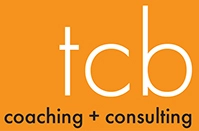 My family had a ski boat when I was growing up. It was a 1967 low profile 16 foot Tahiti, white with sparkling gold flake trim, 150 horse power Mercury outboard engine and a chrome ski pole. It was set up for low end power to pull water-skiers. The boat cruised along the top of the water, cutting a clean path and low wake, ideal for a skier to course back and forth. Bump, bump…turn. Bump, bump…turn.
My family had a ski boat when I was growing up. It was a 1967 low profile 16 foot Tahiti, white with sparkling gold flake trim, 150 horse power Mercury outboard engine and a chrome ski pole. It was set up for low end power to pull water-skiers. The boat cruised along the top of the water, cutting a clean path and low wake, ideal for a skier to course back and forth. Bump, bump…turn. Bump, bump…turn.
I learned to ski, mastering a deep water start on a slalom ski that I could do to this day (if not for 2017 back surgery.) As a teenager I also learned to drive the boat while my dad skied. Our ski boat had only a throttle, steering wheel and an RPM guage. That was it. Not even a windshield! It is easy to go any direction or speed in a boat and drive in a zig zagging manner.
My dad taught me to pick a point on the horizon and point the nose of the boat toward it. To change direction, I’d pick another point and nudge the nose toward it. The idea was to drive in a straight line so that other boats could tell where you were headed and the waterskier could focus on their turns. I learned to operate the throttle smoothly to provide a gentle ride.
Like an untrained boat driver, a new coaching client may not know where they are going or how to get there. They are usually out of ideas about how to “fix” entrenched problems. Sometimes they no longer want to pursue old goals but they also don’t know what they want to do next. Past ideas of success may hold them back from defining a new vision. They zig and zag through days and years wishing their life and work could be different or more purposeful.
Like a good boat driver, coaching clients need to pick a point on the horizon, orient themselves to it and and nudge the throttle forward.
After a new client’s Initial Session, I prepare a “Coaching Outline” which includes a “Coaching Intention” with two to four “Objectives.” The “Objectives” are different issues or areas in which we will work toward the “Coaching Intention.” Like in boating, we may or may not actually arrive at the point on the horizon we picked. But forming an intention allows us to move forward in the right direction and also be responsive to what we learn along the way.
Goal setting requires a clearly articulated and measurable outcome that may not be responsive to developing circumstances. It is easy to develop “tunnel vision” and ignore signs pointing in other directions. “Coaching Intentions” are broad and flexible enough to encompass a range of actions over a long period of time. Clients consistently report that their “Coaching Intention” is a relevant guidepost throughout their coaching experience, even though discrete goals and “Objectives” may be changed or abandoned.
Here are a few sample “Coaching Intentions” –
- “Create a sustainable and profitable practice that allows time for wellness and business development.”
- “Manage my work, team and expectations to improve my productivity at work and decrease stress.”
- “Build an efficient and rewarding law practice and engage in a high quality of life.”
- “Manage my time and attention to develop a niche-focused practice while maintaining quality of life.”
- “Develop strong working relationships and practical skills to support my law practice and well-being.”
- “Manage my time and attention to improve productivity at work, and develop organization and routines for family life.”
“Coaching Objectives” include:
- “Improve my time management and productivity at work.”
- “Consistently record my time and develop consistent billing practices.”
- “Develop and communicate boundaries. Set and manage reasonable expectations.”
- “Hone my practice mix and develop a case intake filter.”
- “Improve my delegation and supervision skills to support my team’s productivity and development.”
- “Learn how to scale my practice to increase efficiency and serve more clients.”
- “Engage in business development to support a new practice area.”
- “Learn about ADHD and notice how ADHD symptoms affect me in work and life.”
- “Discern and visualize my longer term goals for work and life.”
- “Develop self-care practices that fit into a busy life and support my health and wellbeing.”
What might your intentions and objectives be? What is on your horizon? We can find out together in coaching! Learn more about my Coaching Services, and contact me for a free 30-minute consultation: heather@tcbcoaching.com or 503-734-7232
